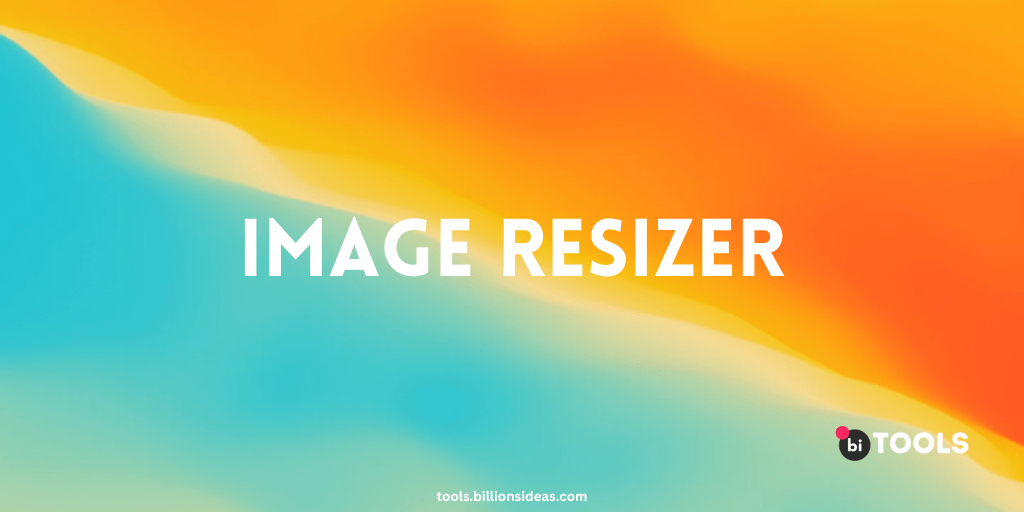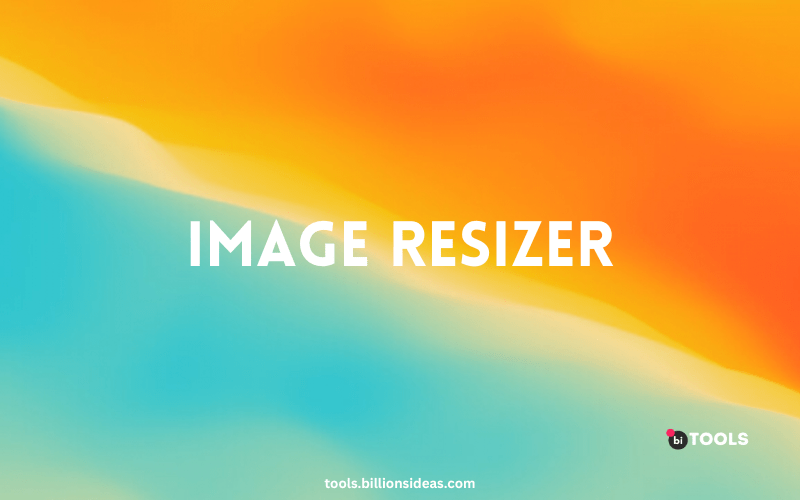Image Resizer

In today’s digital landscape, where websites play a vital role in engaging users and driving business success, optimizing various aspects of a website has become essential. One crucial element that significantly impacts website performance and user experience is images. To ensure your website loads quickly and provides a seamless visual experience, it’s crucial to resize and optimize your images effectively. In this article, we’ll explore the significance of image resizers, understand image dimensions and file size, discuss the benefits of using an image resizer, and provide practical insights on choosing the right tool and resizing images efficiently.
Contents
What is an Image Resizer?
An image resizer is a tool or software that allows you to adjust the dimensions and file size of an image without compromising its quality. It provides a convenient way to resize images for various purposes, such as web design, social media posts, email attachments, and printing materials. By reducing the file size and dimensions of an image, an image resizer helps optimize its performance while maintaining visual appeal.
Why Do You Need an Image Resizer?
As mentioned earlier, large-sized images can have a detrimental impact on website performance. Slow-loading pages can frustrate visitors, leading to higher bounce rates and diminished conversions. An image resizer enables you to optimize your images for the web, making your website faster and more user-friendly.
How to Resize Images Using an Image Resizer
The process of resizing images may vary depending on the tool or software you choose. However, the basic steps usually involve the following:
Online image resizing process:
- Visit the website of the online image resizer of your choice.
- Upload the image you want to resize.
- Specify the desired dimensions or select from preset options.
- Choose the compression level or image quality.
- Click on the “Resize” or “Process” button.
- Download the resized image to your device.
Desktop image resizing process:
- Install the desktop image resizer software on your computer.
- Open the software and import the image you want to resize.
- Adjust the dimensions and aspect ratio as required.
- Set the desired image quality or compression level.
- Preview the resized image.
- Click on the “Save” or “Export” button to save the resized image.
Mobile image resizing process:
- Download and install the image resizer app on your mobile device.
- Open the app and select the image you want to resize.
- Choose the desired dimensions or aspect ratio.
- Adjust the image quality or compression level.
- Preview the resized image.
- Save the resized image to your device or share it directly.
Importance of Image Resizer
Enhancing Website Performance
A slow-loading website can frustrate users and lead to higher bounce rates. By utilizing an image resizer, you can reduce the file size of your images without compromising quality. This optimization technique helps improve website performance by minimizing the time it takes for images to load.
Improving User Experience
Large, unoptimized images can disrupt the visual flow of your website and cause a cluttered appearance. With an image resizer, you can ensure that images fit harmoniously within your website’s design, enhancing user experience and making your content more visually appealing.
Optimizing for Mobile Devices
With the rise of mobile browsing, it’s crucial to optimize images for different screen sizes. An image resizer allows you to resize images to fit various devices, ensuring that your website remains responsive and accessible to users on smartphones and tablets.
Benefits of Using an Image Resizer
When it comes to image optimization, an image resizer tool offers numerous benefits.
Reducing Image File Size
Image resizers employ efficient compression algorithms to reduce the file size of images. By removing unnecessary metadata and applying compression techniques, an image resizer helps to minimize the amount of data that needs to be downloaded, resulting in faster load times.
Preserving Image Quality
While reducing file size is important, maintaining image quality is equally crucial. High-quality image resizers employ advanced algorithms that intelligently balance compression and preservation of image details, ensuring that your resized images retain their visual integrity.
Scaling Images for Different Devices
Websites need to be accessible across a range of devices with varying screen sizes. An image resizer enables you to resize images to fit different devices while maintaining the correct aspect ratios, ensuring a consistent and visually appealing experience for all users.
How to Choose the Right Image Resizer Tool
Choosing the right image resizer tool can greatly impact the efficiency and effectiveness of your image optimization efforts. Consider the following factors when selecting an image resizer tool:
Compatibility with File Formats
Ensure that the image resizer tool supports a wide range of file formats commonly used for web graphics, such as JPEG, PNG, and GIF. This versatility ensures you can resize images regardless of their original format.
Ease of Use and User Interface
A user-friendly interface and intuitive design make the image-resizing process more efficient and accessible. Look for tools that offer a simple and straightforward workflow, allowing you to resize images quickly and effortlessly.
Advanced Features and Customization Options
Different images may require specific adjustments based on their content and purpose. Choose an image resizer tool that provides advanced features like cropping, rotation, and filters, allowing you to customize your images according to your unique requirements.
Speed and Efficiency of Resizing Process
Efficiency is crucial when resizing multiple images or working with large file sizes. Look for tools that offer fast processing times without compromising the quality of resized images. This ensures a smooth and time-effective optimization process.
Conclusion
In the world of web optimization, image resizing plays a vital role in enhancing website performance and improving user experience. By employing an image resizer tool, you can reduce file sizes, maintain image quality, and ensure compatibility across various devices. Remember to choose a tool that meets your specific requirements and follows best practices for effective image resizing. By optimizing your website’s visual assets, you can create a faster, more engaging user experience that drives success.
Frequently Asked Questions (FAQs)
Can I resize images without losing quality?
Yes, by using advanced image resizer tools and applying appropriate compression techniques, you can resize images while maintaining high quality.
Q: Are there any free image resizer tools available?
Yes, several free image resizer tools are available online. However, they may have limitations in terms of features and customization options.
How does image resizing impact SEO?
Optimized images that load quickly can positively impact SEO by improving website performance and reducing bounce rates.
Is it necessary to resize images for mobile devices?
Yes, resizing images for mobile devices ensures proper display and optimal performance on smartphones and tablets.
Can I resize multiple images simultaneously?
Many image resizer tools offer batch resizing capabilities, allowing you to resize multiple images in one go.
